-
 Bitcoin
Bitcoin $84,566.1805
-0.57% -
 Ethereum
Ethereum $1,592.2699
-0.60% -
 Tether USDt
Tether USDt $0.9999
0.00% -
 XRP
XRP $2.0827
0.05% -
 BNB
BNB $595.0697
0.54% -
 Solana
Solana $133.8668
-0.51% -
 USDC
USDC $0.9999
0.01% -
 Dogecoin
Dogecoin $0.1581
0.11% -
 TRON
TRON $0.2414
-3.25% -
 Cardano
Cardano $0.6267
0.55% -
 UNUS SED LEO
UNUS SED LEO $9.2366
2.17% -
 Chainlink
Chainlink $12.5949
0.15% -
 Avalanche
Avalanche $19.1131
-0.90% -
 Toncoin
Toncoin $3.0082
1.10% -
 Stellar
Stellar $0.2418
0.58% -
 Shiba Inu
Shiba Inu $0.0...01233
3.67% -
 Hedera
Hedera $0.1654
1.00% -
 Sui
Sui $2.1393
-0.24% -
 Bitcoin Cash
Bitcoin Cash $342.0697
2.59% -
 Litecoin
Litecoin $76.9074
1.71% -
 Polkadot
Polkadot $3.6967
1.20% -
 Hyperliquid
Hyperliquid $16.8937
0.83% -
 Dai
Dai $0.9999
-0.03% -
 Bitget Token
Bitget Token $4.3923
0.72% -
 Ethena USDe
Ethena USDe $0.9991
0.00% -
 Pi
Pi $0.6199
0.69% -
 Monero
Monero $217.2905
0.20% -
 Uniswap
Uniswap $5.1988
-0.89% -
 Pepe
Pepe $0.0...07244
-1.72% -
 OKB
OKB $50.5192
-0.32%
What is the PoA consensus mechanism of blockchain?
PoA enhances blockchain efficiency and security in private networks, using trusted validators for faster, energy-efficient transaction processing.
Apr 11, 2025 at 09:14 pm
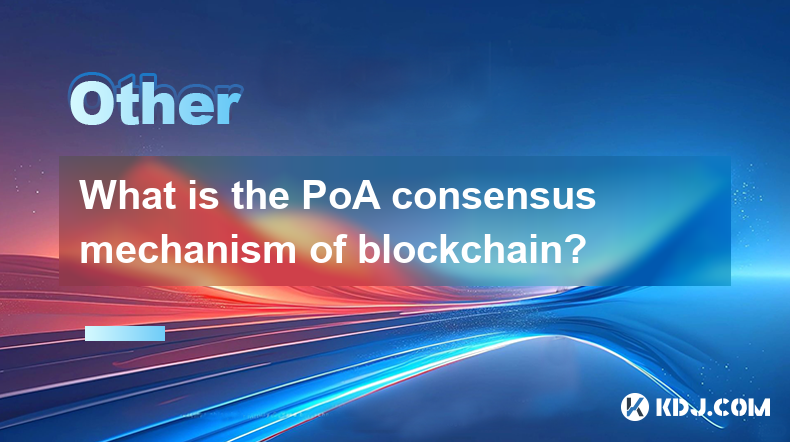
The Proof of Authority (PoA) consensus mechanism is a significant part of blockchain technology, designed to enhance efficiency and security in certain types of networks. PoA is particularly useful in private or consortium blockchains where the identity of the validators is known and trusted. This mechanism relies on a set of pre-approved validators, known as "authorities," who are responsible for validating transactions and creating new blocks. Unlike Proof of Work (PoW) or Proof of Stake (PoS), PoA does not require validators to solve complex mathematical problems or hold a certain amount of cryptocurrency. Instead, it leverages the reputation and identity of the validators to maintain the integrity of the network.
How PoA Works
In a PoA system, the network selects a group of validators based on their reputation and identity. These validators are typically known entities with a vested interest in maintaining the network's integrity. When a new transaction is submitted to the network, it is broadcast to all validators. The validators then verify the transaction according to the network's rules. If the transaction is valid, one of the validators, chosen based on a predetermined algorithm, adds it to a new block and broadcasts the block to the network. Other validators then verify the block and, if it is valid, add it to their copy of the blockchain.
Advantages of PoA
One of the primary advantages of PoA is its high transaction throughput. Because validators do not need to compete to solve complex problems, transactions can be processed much faster than in PoW systems. Additionally, PoA networks are more energy-efficient, as they do not require the significant computational power needed for mining in PoW systems. Another advantage is the reduced risk of 51% attacks, as the validators are known and trusted entities, making it more difficult for malicious actors to gain control of the network.
Disadvantages of PoA
Despite its advantages, PoA also has some drawbacks. The most significant disadvantage is the centralization of trust. Because the network relies on a small group of validators, the system's security is dependent on the honesty and reliability of these validators. If a validator becomes compromised or acts maliciously, it could potentially harm the network. Additionally, PoA may not be suitable for public blockchains, as the requirement for known validators goes against the decentralized nature of these networks.
Use Cases of PoA
PoA is particularly well-suited for certain use cases within the blockchain ecosystem. One common application is in private or consortium blockchains, where the participants are known and trusted. For example, a group of banks might use a PoA network to securely share data and process transactions. Another use case is in testing and development environments, where PoA can provide a fast and efficient way to test new blockchain applications without the need for a full PoW or PoS network.
Implementing PoA in a Blockchain Network
Setting up a PoA network involves several steps, which can vary depending on the specific blockchain platform being used. Here is a general outline of the process:
- Choose a Blockchain Platform: Select a blockchain platform that supports PoA, such as Ethereum with its Clique or Aura consensus algorithms.
- Identify Validators: Determine who will serve as validators in the network. These should be trusted entities with a reputation for honesty and reliability.
- Configure the Network: Set up the network parameters, including the number of validators and the rules for block creation and validation.
- Deploy the Network: Launch the network and ensure that all validators are connected and functioning correctly.
- Monitor and Maintain: Regularly monitor the network to ensure that it is operating as expected and address any issues that arise.
Security Considerations in PoA
Security is a critical aspect of any blockchain network, and PoA is no exception. One of the key security considerations is the selection and management of validators. It is essential to choose validators who are trustworthy and have a strong incentive to maintain the network's integrity. Additionally, the network should have mechanisms in place to detect and respond to any malicious behavior by validators. Regular audits and monitoring can help identify potential issues before they become significant problems.
PoA vs. Other Consensus Mechanisms
Comparing PoA to other consensus mechanisms can help highlight its unique features and potential applications. PoA is often contrasted with PoW and PoS. PoW, used by Bitcoin, requires validators to solve complex mathematical problems, which can be energy-intensive and slow. PoS, used by networks like Ethereum 2.0, requires validators to hold a certain amount of cryptocurrency, which can be more energy-efficient but still slower than PoA. PoA's focus on known validators and reputation makes it faster and more energy-efficient than both PoW and PoS, but it also introduces a degree of centralization that may not be suitable for all use cases.
Real-World Examples of PoA
Several blockchain networks have successfully implemented PoA, demonstrating its practical applications. One notable example is the VeChainThor blockchain, which uses PoA to provide a fast and secure platform for supply chain management. Another example is POA Network, a public Ethereum-based network that uses PoA to offer a scalable and efficient platform for decentralized applications. These examples illustrate how PoA can be effectively used in various contexts to meet specific needs.
Frequently Asked Questions
Q: Can PoA be used in public blockchains?
A: While PoA is primarily used in private or consortium blockchains, it can be adapted for use in public blockchains under certain conditions. However, the requirement for known validators may conflict with the decentralized nature of public blockchains, making it less common in these contexts.
Q: How does PoA handle validator misconduct?
A: PoA networks typically have mechanisms in place to detect and respond to validator misconduct. This can include monitoring systems to identify suspicious behavior, as well as protocols for removing or penalizing validators who act maliciously.
Q: Is PoA more scalable than PoW and PoS?
A: Yes, PoA is generally more scalable than PoW and PoS due to its faster transaction processing times and lower energy requirements. This makes it well-suited for applications that require high throughput and efficiency.
Q: Can PoA be combined with other consensus mechanisms?
A: Yes, some blockchain networks use hybrid consensus mechanisms that combine PoA with other methods like PoS. This can help balance the benefits of different approaches and create a more robust and flexible system.
Disclaimer:info@kdj.com
The information provided is not trading advice. kdj.com does not assume any responsibility for any investments made based on the information provided in this article. Cryptocurrencies are highly volatile and it is highly recommended that you invest with caution after thorough research!
If you believe that the content used on this website infringes your copyright, please contact us immediately (info@kdj.com) and we will delete it promptly.
- Oregon AG Sues Coinbase Over Token Sales
- 2025-04-19 03:20:13
- Bank of America Is Attempting to Monopolize the Stablecoin Market
- 2025-04-19 03:20:13
- Bitcoin (BTC) price could take a hit after US Federal Reserve reports some of the worst manufacturing data in recent history
- 2025-04-19 03:15:13
- ADA Price Prediction: Bold Prediction Lit Up the Cardano Community This Week
- 2025-04-19 03:15:13
- Push For Bitcoin Reserve Gains Momentum In Brazil
- 2025-04-19 03:10:15
- HashKey Capital Launches Asia's First XRP Tracker Fund—with Ripple as an Early Investor.
- 2025-04-19 03:10:15
Related knowledge
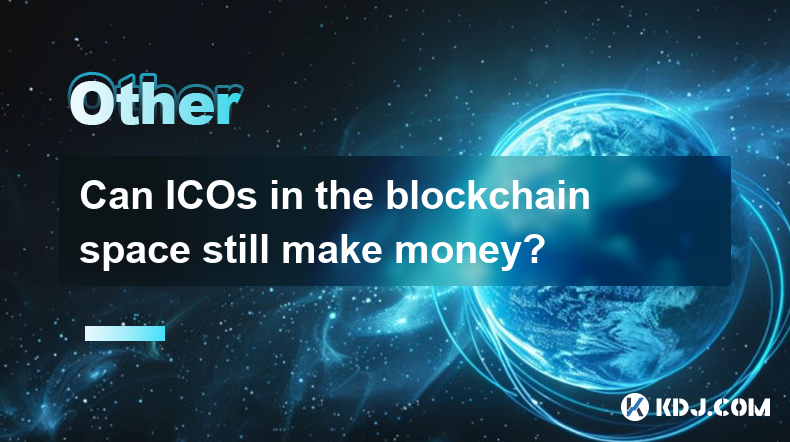
Can ICOs in the blockchain space still make money?
Apr 17,2025 at 08:29pm
The landscape of Initial Coin Offerings (ICOs) in the blockchain space has evolved significantly since their peak in 2017 and 2018. Despite the increased regulatory scrutiny and the rise of alternative fundraising methods like Security Token Offerings (STOs) and Initial Exchange Offerings (IEOs), ICOs can still be a viable way to raise funds and generat...

Can the application of blockchain in supply chain finance bring benefits?
Apr 15,2025 at 04:00pm
Can the application of blockchain in supply chain finance bring benefits? The integration of blockchain technology into supply chain finance has garnered significant attention in the cryptocurrency and financial sectors. This article explores how blockchain can potentially revolutionize supply chain finance, detailing its benefits and providing a compre...
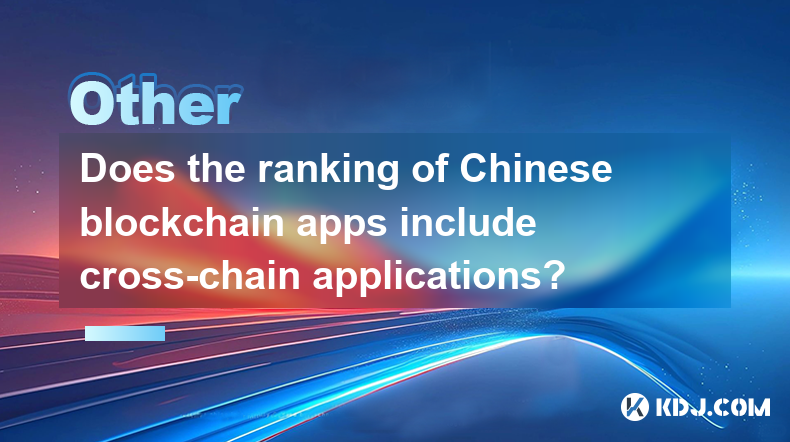
Does the ranking of Chinese blockchain apps include cross-chain applications?
Apr 14,2025 at 04:00pm
The ranking of Chinese blockchain apps is a comprehensive evaluation that takes into account various aspects such as user base, transaction volume, and technological innovation. A pertinent question arises regarding whether these rankings include cross-chain applications. Cross-chain applications, which allow different blockchain networks to interact an...
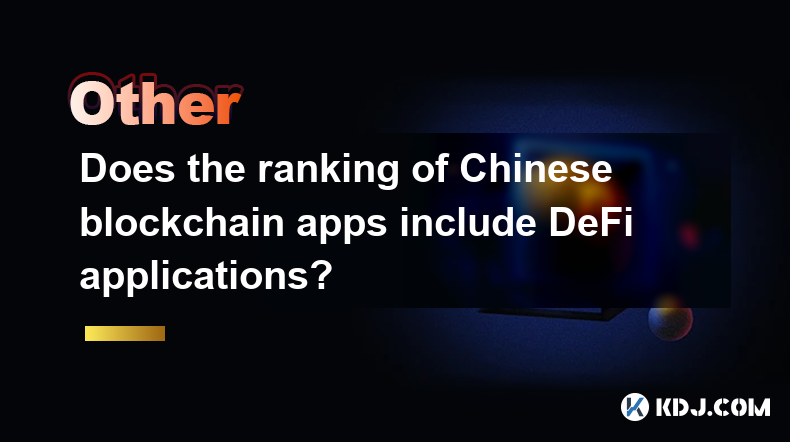
Does the ranking of Chinese blockchain apps include DeFi applications?
Apr 15,2025 at 06:57am
The ranking of Chinese blockchain apps is a comprehensive list that showcases the most popular and influential applications within the cryptocurrency ecosystem. One question that often arises is whether these rankings include DeFi applications. To answer this, we need to delve into the specifics of how these rankings are compiled and what types of appli...
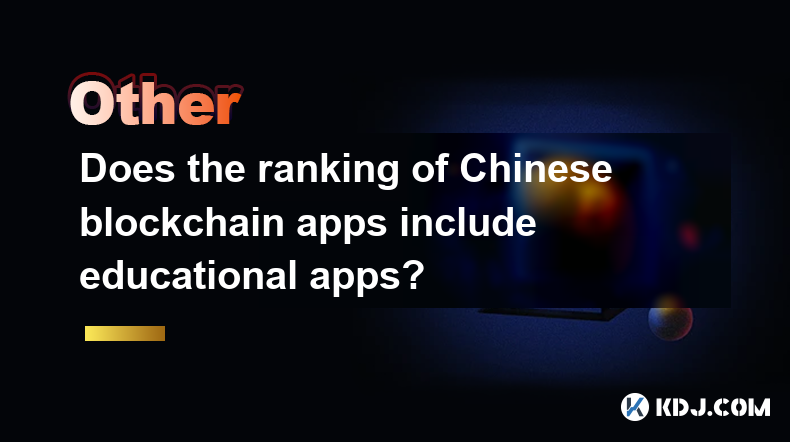
Does the ranking of Chinese blockchain apps include educational apps?
Apr 16,2025 at 03:35am
The ranking of Chinese blockchain apps often includes a variety of categories, from finance and gaming to social networking and beyond. One question that frequently arises is whether these rankings include educational apps. To address this, we need to delve into the specifics of how blockchain apps are categorized and ranked in China, and whether educat...
Does the ranking of Chinese blockchain apps include enterprise-level applications?
Apr 15,2025 at 06:42am
The ranking of Chinese blockchain apps often includes a variety of applications, ranging from consumer-focused to enterprise-level solutions. Understanding the scope and criteria for these rankings is essential to determine if enterprise-level applications are included. This article delves into the specifics of how Chinese blockchain app rankings are co...

Can ICOs in the blockchain space still make money?
Apr 17,2025 at 08:29pm
The landscape of Initial Coin Offerings (ICOs) in the blockchain space has evolved significantly since their peak in 2017 and 2018. Despite the increased regulatory scrutiny and the rise of alternative fundraising methods like Security Token Offerings (STOs) and Initial Exchange Offerings (IEOs), ICOs can still be a viable way to raise funds and generat...

Can the application of blockchain in supply chain finance bring benefits?
Apr 15,2025 at 04:00pm
Can the application of blockchain in supply chain finance bring benefits? The integration of blockchain technology into supply chain finance has garnered significant attention in the cryptocurrency and financial sectors. This article explores how blockchain can potentially revolutionize supply chain finance, detailing its benefits and providing a compre...

Does the ranking of Chinese blockchain apps include cross-chain applications?
Apr 14,2025 at 04:00pm
The ranking of Chinese blockchain apps is a comprehensive evaluation that takes into account various aspects such as user base, transaction volume, and technological innovation. A pertinent question arises regarding whether these rankings include cross-chain applications. Cross-chain applications, which allow different blockchain networks to interact an...

Does the ranking of Chinese blockchain apps include DeFi applications?
Apr 15,2025 at 06:57am
The ranking of Chinese blockchain apps is a comprehensive list that showcases the most popular and influential applications within the cryptocurrency ecosystem. One question that often arises is whether these rankings include DeFi applications. To answer this, we need to delve into the specifics of how these rankings are compiled and what types of appli...

Does the ranking of Chinese blockchain apps include educational apps?
Apr 16,2025 at 03:35am
The ranking of Chinese blockchain apps often includes a variety of categories, from finance and gaming to social networking and beyond. One question that frequently arises is whether these rankings include educational apps. To address this, we need to delve into the specifics of how blockchain apps are categorized and ranked in China, and whether educat...

Does the ranking of Chinese blockchain apps include enterprise-level applications?
Apr 15,2025 at 06:42am
The ranking of Chinese blockchain apps often includes a variety of applications, ranging from consumer-focused to enterprise-level solutions. Understanding the scope and criteria for these rankings is essential to determine if enterprise-level applications are included. This article delves into the specifics of how Chinese blockchain app rankings are co...
See all articles
























































































